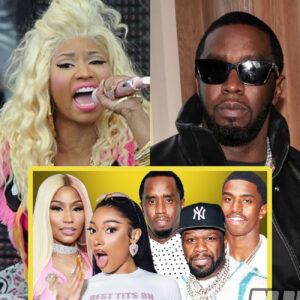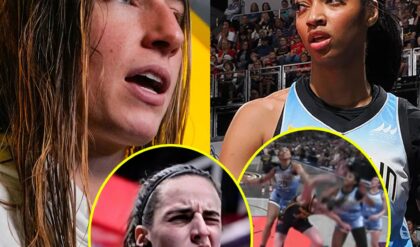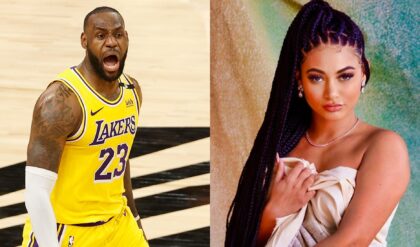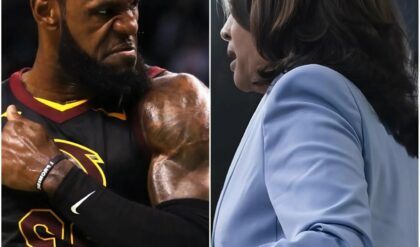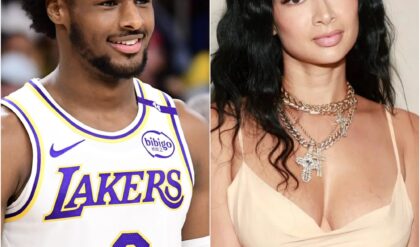**Mary J. Blige: The Trailblazing Queen of Hip-Hop Soul and the Struggle Against Replication**
Mary J. Blige is a name that resonates powerfully within the music industry, often celebrated as the Queen of Hip-Hop and R&B Soul. While her contributions and influence are widely acknowledged, her profound impact on the music industry and the many doors she opened for future female R&B artists deserve more extensive recognition.
Blige’s distinctive approach, blending hip-hop with R&B and presenting an edgy, raw image, revolutionized the music scene. However, this groundbreaking style also led to an industry trend where labels attempted to recreate her success with other artists, causing friction and misunderstandings along the way.

**Setting the Stage: Mary J. Blige’s Unique Impact**
Mary J. Blige’s arrival on the music scene was nothing short of transformative. With a raw, unapologetic edge, she brought a new energy that resonated deeply with audiences.
Her seamless blend of hip-hop beats with soulful R&B melodies was unprecedented, establishing a new genre that many artists would later emulate.
Blige’s influence extended beyond music; her personal style, characterized by a tough yet vulnerable image, set trends and redefined what it meant to be a female artist in the R&B and hip-hop genres.
**The Rise of Faith Evans: A Complicated Relationship**
One of the earliest and most notable examples of Blige’s influence leading to replication involved Faith Evans. Signed to Bad Boy Records, Evans was promoted using a blueprint strikingly similar to Blige’s.
This was particularly evident after Blige’s mentor, P. Diddy, left Uptown Records to start his own label, Bad Boy Records. Diddy replicated the success formula he had developed with Blige, positioning Evans in a comparable space within the R&B landscape.
Blige and Evans initially shared a friendly rapport, collaborating on several tracks. However, as Evans’ career progressed and her marketing increasingly mirrored Blige’s, tensions arose.
Blige has acknowledged that she understood the business motivations behind Diddy’s strategy but couldn’t help feeling a twinge of confusion and irritation as more artists emerged in her mold. This replication, while flattering on some level, also sparked a sense of competition and unease.
**Miscommunication and Mistrust: The Fallout with Faith Evans**
The tension between Blige and Evans was exacerbated by industry machinations and personal affiliations. Blige’s close friendship with Lil’ Kim, who had a publicized conflict with Evans over their mutual connection to The Notorious B.I.G., further strained the relationship.
Reports of miscommunication and misinformation abounded. In one instance, Blige requested the removal of Evans’ vocals from a track on Evans’ debut album, a move that Evans found bewildering and hurtful.
Blige later clarified that the request was misrepresented to Evans, highlighting how industry politics and poor communication can distort relationships.
**Pink: Another Case of Creative Parallels**
Blige’s influence was not confined to the realm of R&B. The pop-rock star Pink, before venturing into her signature sound, started her career with an R&B focus, a direction heavily influenced by her label’s push for an urban market appeal. Pink once approached Blige for a collaboration, only to be met with a firm refusal.
This encounter, though potentially perceived as blunt, underscores Blige’s discernment in her artistic collaborations and her reluctance to engage in partnerships that didn’t align with her vision or style.
Blige’s refusal wasn’t necessarily a slight against Pink but a reflection of her selective approach to collaborations. It also mirrored Blige’s broader sentiment towards the industry’s tendency to mold new artists in the likeness of successful predecessors.
Pink eventually carved out her unique niche, but not without initially experiencing the frustrations of being directed down a path that echoed Blige’s journey.
**Keyshia Cole: The Next Generation’s Struggle**
The industry’s propensity to replicate Blige’s success extended to artists like Keyshia Cole, who emerged as a younger version of Blige, singing soulful anthems of heartbreak.
Cole, a self-professed admirer of Blige, found herself constantly compared to her idol. While this comparison initially seemed complimentary, it soon became a point of contention. Reports of friction between Blige and Cole surfaced, with Blige allegedly feeling overshadowed by the younger artist.
Cole recounted an incident where Blige, during an interview, dismissed questions about her, which Cole found disheartening. This encounter highlighted the complexities of admiration turning into professional rivalry, especially when the industry continually pits artists against one another.
**Understanding Blige’s Perspective**
Blige’s reactions to these emerging artists reflect a broader commentary on the music industry’s cyclical nature and the pressure it places on artists to maintain their uniqueness amidst a sea of replicas.
Her refusal to collaborate with artists she felt were too closely following her blueprint is not merely an act of pettiness but a stand for maintaining artistic integrity and individuality.
**Conclusion: Mary J. Blige’s Enduring Legacy**
Mary J. Blige’s legacy is a testament to her pioneering spirit and her resilience in an industry that often seeks to replicate success. While her influence on subsequent generations of artists is undeniable, her journey also sheds light on the challenges of maintaining individuality in a business driven by replication.
Blige’s story is one of a trailblazer who not only opened doors but also navigated the complexities of her influence, asserting her place as a true original in the world of music.
News
Drama in the Ring! Tyson Fury Terminates John Fury’s Role as Trainer After Brutal Upset by Oleksandr Usyk
In a dramatic turn of events, Tyson Fury has decided to terminate his father John Fury’s role as his trainer following a brutal upset by Oleksandr Usyk. The unexpected loss has sent shockwaves through the boxing community and led to…
(VIDEO) Megan Thee Stallion BAITS Nicki Minaj into another rap beef? | 50 Cent DRAGS Diddy’s son Christian
**Christian Combs Disses 50 Cent and 50 Responds: A Clash of Hip-Hop Titans** In the realm of hip-hop, beefs and controversies are almost as common as chart-topping hits. Recently, a new chapter unfolded in the ongoing saga between Christian Combs,…
Breaking: Gordon Ramsay Throws Robert De Niro Out Of His Restaurant, “Don’t Come Back Here You Woke Baby”
In a dramatic and unexpected turn of events, renowned celebrity chef Gordon Ramsay has made headlines by reportedly throwing Academy Award-winning actor Robert De Niro out of his restaurant. The incident, which has sparked widespread media attention and public debate,…
(VIDEO) Joe Rogan & Matthew McConaughey Exposes 7 Actors Hollywood BETRAYED
**Unveiling the Dark Side of Hollywood: The Stories of Matthew McConaughey, Keanu Reeves, and Wesley Snipes** Hollywood, often seen as a dreamland of glitz and glamour, has a hidden underbelly that reveals a starkly different reality for some of its…
Breaking: Denzel Washington Rejects $100 Million Disney Offer to Work with ‘Woke’ Robert De Niro, ‘He’s a Creepy Old Man’
In a recent turn of events that has left Hollywood in a state of shock and contemplation, Denzel Washington, a figure synonymous with integrity and talent in the film industry, has made headlines by rejecting a colossal $100 million offer…
Breaking: Robert De Niro Gets Kicked Out Of The Warner Bros. Studio, “Keep Your Wokeness Out”
In a shocking turn of events that has sent ripples through Hollywood, iconic actor Robert De Niro was reportedly thrown out of Warner Bros. Studios. The reason cited? Spreading his “creepiness.” This incident has sparked intense debate and controversy, leaving…
End of content
No more pages to load

